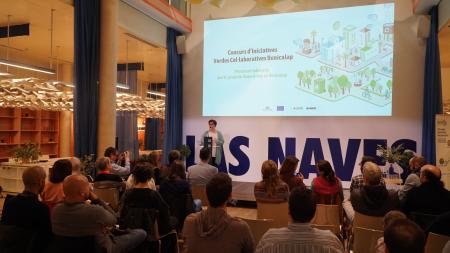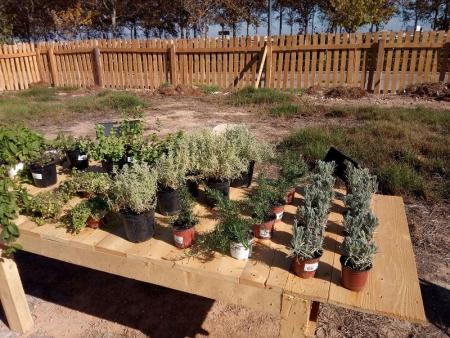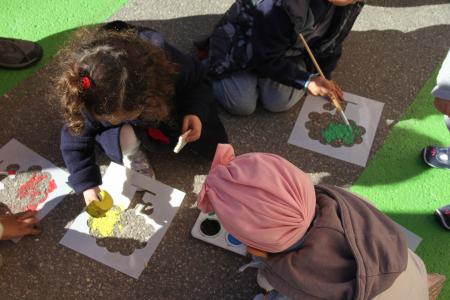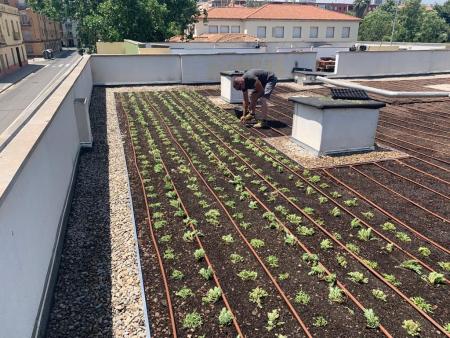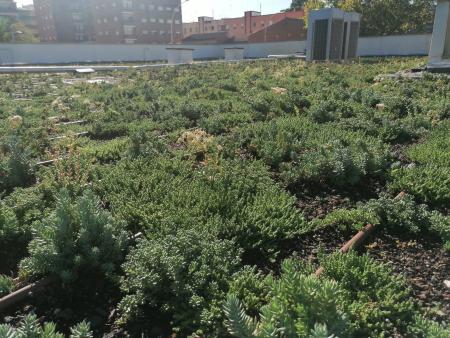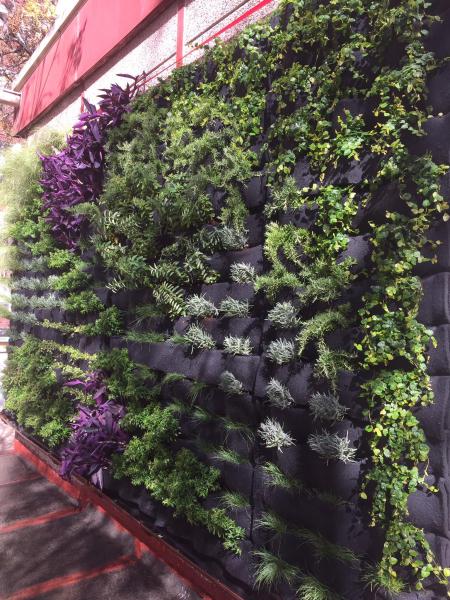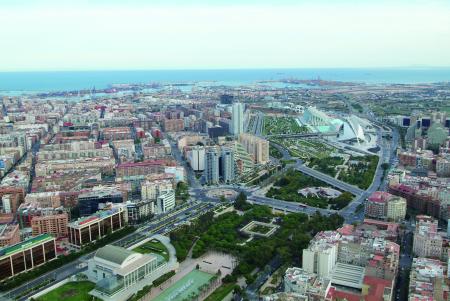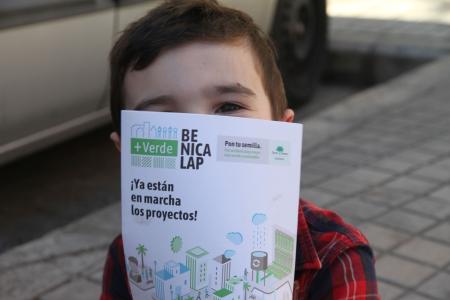
Area characterisation:
Valencia is located on Spain’s eastern Mediterranean coast, and is the country’s third city demographically and economically. Its climate is characterised by hot summers and little rainfall. Climate change predictions suggest that higher temperatures, less rainfall and more extreme weather events are likely.
The Grow Green project is located in the neighbourhood of Benicalap. The district is in the northwest of the historic centre of Valencia and was connected to the city in the 19th century. This area has a relatively high population density, in fact it covers only 1.5 % of the city area but hosts 6% of the people.
Benicalap was chosen as the demonstration site due to the need for regeneration and improvement. The area lacks resources and services. Compared with other areas in the city, the local population has lower incomes and education levels, and high unemployment rates.
Objective:
- To demonstrate the potential of nature-based solutions to reduce heat stress, manage water and improve wellbeing and social cohesion
- To engage local people in designing nature-based solutions that meet their needs
- To develop an effective strategy for nature-based solutions across the city
Images
Financing:
Due to the actions of the strategy not being defined as yet, there is no designated financial plan. Yet, the approach was to promote and facilitate the sources of financing of the NbS. The implementation of "Green Clauses" for the current bidding processes in the city of Valencia and "Innovative Public Procurement - IPP" are intended to foster innovative solutions. The "Green Clauses" favour the use of NbS over other interventions and encourage the promotion of companies and service providers aligned with these solutions. A new urban strategy which aims to integrate innovation is introducing "Innovative Public Procurement - CPI" as a funding instrument to promote NbS.
Potential impacts/benefits:
• Reduced heat stress and better management of rainwater in the neighbourhood of the demonstration project.
• An improved environment for the local population, including cooler streets and buildings, as well as better habitat for wildlife and a diversity of vegetation.
• Increased awareness and understanding of nature-based solutions amongst the local population.
• A strategic basis for further development of nature-based solutions across the city.
Actions:
The demonstration projects area:
- A Sustainable Forest as an addition of the local park in a space previously used for car parking; It transforms an unused plot with bioretention systems consisting of three cascading infiltration basins, other SUDs and a Mediterranean ecosystem. Water management and vegetal species diversity have been improved greatly.
- A Blue Green Corridor along a main street incorporating SuDS, biocells and shaded space.
- A Vertical Ecosystem on the façade of the local school, which insulates and soundproofs the classroom inside, but has as objective the purification of grey water from the school bathrooms to be reutilized in the school garden.
- A Green Roof was made on the rooftop of a centre for the elderly, originally composed of a layer of gravel. The benefits included an achieved permeabilization and temperature regulation, lowering the original maximum temperature in summer from 40 C° to 26 C°, and improving the habitability and the energy efficiency of the centre.
- A Biodiversity App, developed by the Universidad Politécnica de Valencia, which is an educational tool to educate on biodiversity and NbS. It is an interactive game-like tool to teach NbS plus the plant and bird biodiversity of the neighbourhood.
- A Food Distribution Service called Cistella Solidaria, which is a service distributing food cultivated in the vicinity. It was developed in conjunction with the La Fundación De La Comunitat Valenciana Para La Promoción Estratégica, el Desarrollo y La Innovación Urbana and with C.E.D.A.T. A.G, S.L. It is organized via focus groups to ensure representation of social groups and price regulation.
- Open Calls to increase citizen participation and engagement resulting in building structures and workshops, a biodiversity project, and a video. These resulted in five initiatives:
- A community garden for associations on disused land. The space has three areas: a community garden, a forest of fruit trees, and an area for socio-educational activities.
- A civic centre built in the community garden area using recycled materials with a paved area with a roof, electricity and lighting from renewable sources and planters. The construction was coordinated by professionals from the Arrelaires association with the help over 50 volunteers, ranging from children to the elderly.
- ALIATS ALATS (Winged Allies) – Workshops and wildlife monitoring. The aim of was to promote the presence of the area’s fauna, bats, and insectivorous birds i.e. species that protect against mosquitoes and other insects. Workshops were held with the local school.
- Urban Resilience Provision - Heat resilient devices were placed in a school playground to provide meeting areas, tables and benches for the school pupils.
- ECO-REMEI - a media project that followed the winning projects as well as the construction of the demonstration projects. The result has been the production of mini videos of each project where the authors tell the story of the work carried out (https://ecoremedi.es/proyectos/).
Transferability of result:
The ability to create demonstration projects through co-design represents a milestone in good practice that will be useful in the planning of new projects, both public and private. The expansion of the Benicalap Park will spread nature through the district to integrate the forest. The municipal office involved in GrowGreen, Las Naves, plays a key role in introducing innovations to local government actions, for instance organising transfer sessions with students, or leisure activities open to all citizens, and a workshop to share good practice to public and political actors.
Lessons learnt:
- include the correct stakeholders to create a viable and lasting design
- promoting green solutions should be part of municipal management agenda
- citizen engagement had a positive impact with the local residents brought significant support.
- Cost/effectiveness is critical: monitoring is expensive and requires maintenance
- interdepartmental coordination is essential
Organisations:
Municipality of Valencia, Las Naves
Client:
Municipality of Valencia
Design team:
Municipality of Valencia, Las Naves, Valencia Polytechnic University, Paisaje Transversal, Bipolaire
Contacts:
Francisca Hipolito
- email : francisca.hipolito@lasnaves.com
José Ignacio Lacomba Andueza
- email : jilacomba@valencia.es
- tel. : 96 352 54 78
Global goals:
-
3. Good Health and well being
-
4. Quality education
-
6. Clean water and sanitation
-
9. Industry, innovation and infrastructure
-
11. Sustainable cities and communities
-
13. Climate action
-
15. Life on land
-
17. Partnerships for the goals
NBS goals:
- Enhancing sustainable urbanization
- Developing climate change mitigation
- Developing climate change adaptation
- Improving risk management and resilience
- Urban regeneration through nature-based solutions
- Nature-based solutions for improving well-being in urban areas
NBS benefits:
- Developing climate change adaptation; improving risk management and resilience
- Increasing infiltration
- Reduce load to sewer system
- Reduce run-off
- Reducing temperature at meso or micro scale
- Developing climate change mitigation
- More energy efficient buildings
- Reduction of energy in the production of new buildings and building materials
- Greater ecological connectivity across urban regenerated sites
- Improve connectivity and functionality of green and blue infrastructures
- Increase achievements of biodiversity targets
- Increase Biodiversity
- Increase quality and quantity of green and blue infrastructures
- Increased cultural richness and biodiversity
- Enhancing sustainable urbanisation
- Changing image of the urban environment
- Increase accessibility to green open spaces
- Increase amount of green open spaces for residents
- Increase awareness of NBS solution & their effectiveness and co benefits
- Increase communities’ sense of ownership
- Increase social interaction
- Increase stakeholder awareness & knowledge about NBS
- Increase well-being
- Provision of health benefits
- Social inclusion
